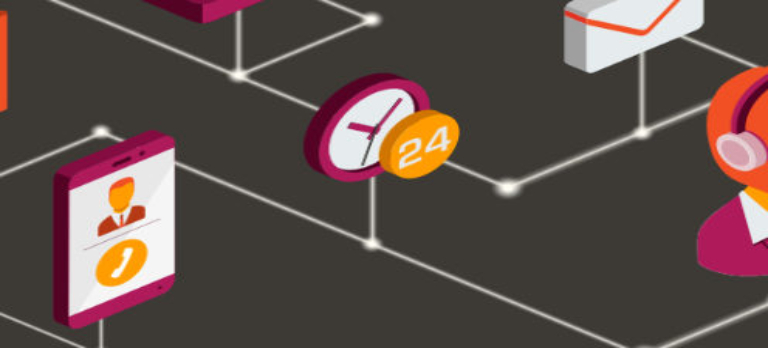Human-centered design (HCD) puts people at the center of development processes. Doing so requires understanding end users’ needs, behaviors, and experiences and then designing processes to respond to those realities. For too long, government services were designed around the inherent bureaucracy involved in administering them, but with today’s focus on improving customer experience and trust in government, agencies have embraced a wholesale shift to HCD.
A basic example of the impact of HCD is the naming of a form. Let’s say you are looking to get federal aid to open a business. The form needed is available on an agency site and is labeled BU-126. This means something to the government employees who process the request, but does not have any meaning for a citizen searching for start-up funding. Instead of listing the form by its government code, the agency should make it available behind a link that says something like “Need help Launching your Business?” The citizen never needs to know the name of the form, only that it is required for them to get aid.
Go to the Source
To get to the next level of HCD, agencies need to interact with their constituents to gain feedback on current service experiences and better understand why certain processes are proving difficult and time consuming. This insight can be gained through surveys, focus groups, or call-center conversations.
With an audience as large as the population of the U.S. it may not be feasible to have these interactive discussions with a representative group. Frontline employees (call center and customer service reps, field agents, social workers, and more) can be a proxy for providing customer feedback. They see and hear the problems of citizens day in and day out. They also will have important insights as to their own frustrations with process that impede their ability to provide service.
Check the Data
In addition to the qualitative input gained from customer surveys, HCD also relies on hard data. This can be metrics like time on hold, time to resolution, number of customers served per day, or backlog of requests.
If an agency is seeking to improve customer service, it is highly likely that many of these pieces of data are pretty negative. When gathering data, an HCD team has to be sensitive to the realities of current performance. Employees should be assured that the data is being collected as a baseline to show progress. It will not be used to punish people or teams for their performance to date.
Other important data around user experience can also inform areas for improvement. Looking at website visits – how long people stay on the site, where they abandon the process, and what actions they ultimately take – can provide insight into customer journeys as well as areas for improvement.
HCD getting results
The Internal Revenue Service (IRS) has long been overwhelmed with the amount of inquiries that come in. One step it is taking is simplifying the messages that go out to taxpayers to reduce confusion and the need to contact the agency at all. The IRS has redesigned 31 notices for this tax season and by next year’s tax season, it wants to redesign up to 200 of the most common notices for individual taxpayers, which make up about 90% of the total volume of notices sent to individuals. By making letters easier to understand and reducing inquiries, IRS employees can work on other things.
Similarly, the Federal Emergency Management Agency (FEMA) has long been accused of slow response with disaster aid. FEMA is introducing a complete overhaul to how it delivers aid. Changes include a new policy that will provide a rapid cash payment of $750 to all victims of federally declared disasters, by direct deposit or check, without states needing to request the money first. It also provides victims with flexible upfront funding to cover about two weeks of housing, rather than making them submit long-term housing plans before issuing funds to cover their expenses. FEMA is also eliminating the need to interact with other agencies and get denials for other available support services before moving forward with enrolling in FEMA-led programs. These changes are a direct result of listening to the frustrations of citizens impacted by disasters.
To learn more about how human-centered design is impacting government’s approach to customer service, check out these resources from GovWhitePapers and GovEvents.:
- Elevating Government CX to Meet the Needs of Today’s Digital Citizens (white paper) – The U.S. government has recently introduced a set of initiatives aimed at improving the customer experience of its online public services. However, engineering teams intent on making government sites and user applications more user-friendly, trustworthy, and responsive face a unique set of challenges.
- Broadening Public Participation and Community Engagement in the Regulatory Process (white paper) – Federal regulations address a range of important issues and affect many different communities. It is crucial for Federal agencies to craft regulatory proposals with input from affected members of the public. Public involvement in the development of regulations can lead to more effective and equitable regulations; greater trust in government and democratic accountability; and increased public understanding of the regulatory process.
- Changing the Perception: Using Digital Transformation to Increase Trust in Government Agencies (white paper) – This paper explores the critical factors influencing customer trust and provides recommendations and examples for leaders implementing customer experience and digital transformation initiatives.
- Digital Transformation Summit 2024: Digital Government for ALL – Tackling Bias While We Transform Service to Citizens (February 22, 2024; Reston, VA) – The focus of this summit will be on where digital transformation is today and how do we accelerate the transition from existing legacy applications to new innovative technologies.
- Pillars of Modernization (March 21, 2024; Washington, DC) – IT modernization remains a critical component for federal agencies looking to improve operational efficiencies, digitize customer experiences, and bolster service delivery and government operations. Government and industry leaders will share concrete strategies for tackling the complexity of IT modernization based on their own experiences at key federal agencies.
- Data Citizens ‘24 (April 9-11, 2024; Orlando, FL) – At a time when having trusted data can be the difference between success or disaster, it’s important now more than ever that we have a strong understanding of technology trends, stay connected to the data community, and have the tools to make strategic, data-driven decisions.
More government CX insights can be found on GovWhitePapers and GovEvents.










